 Support
Material
Support
Material Support
Material
Support
Material

Addressing Guidelines
Why is the format of an address so important?
Australia Post uses advanced letter sorting technology to read the address on each envelope electronically. These machines work best when address formats are structured in a consistent manner.
That is why it is necessary to address your mail clearly and correctly. The information below demonstrates how.
Envelope Layout
It is important that the zones on the envelope, indicated below, are observed at all times.
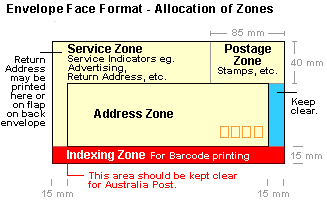
Typically, the address should be written in three lines:
The top line should contain the recipientís name
The second last line should contain the number and name of the street, or PO Box or locked bag number if applicable
The last line should contain the place name or post office of delivery, State or Territory abbreviation and postcode. This line should be printed in capitals without punctuation or underlining. For overseas mail the country name should be in capitals on the bottom line.
Where extra clarifying information is required, place this infomation above the last two lines of the address. This includes information such as:
company or property name
non-address information, e.g. Attention M/s
General Addressing Tips
Use the correct postcode Ė donít guess it if you donít know it. The postcode should be the last item in the address.
Use clear printĖ Print clearly using dark ink, preferably black on white. Red, yellow or orange inks should be avoided.
Keep the address straight Ė the address lines should be parallel to the bottom of the envelope
Donít indent or stagger address lines Ė each line of the address should start at the same point on the left hand side
Space words correctly Ė leave one or two character spaces between the place name or post office of delivery and the State or Territory abbreviation, and the same amount of space between the State or Territory abbreviation and the postcode.
Donít underline anything Ė no words in the address should be underlined.
Include a return address Ė place the senderís address in the top left corner, or on the back flap of the envelope. This ensures we can return the letter if it canít be delivered.
Machine Addressing Tips
Use clear readable type. Ensure the print characters in the address do not touch or overlap. Australia Post recommends using a fixed pitch type font such as Courier 12 point, 10 pitch
Avoid italic, artistic, script, coarse dot matrix, extremely wide or narrow print fonts.
Replace worn out ribbons or cartridges.
Addresses in window panel envelopes should be clearly visible through the window. No other information should appear through the window, together with the address, even if the contents should move.
Donít use Postcode Squares for machine-addressed letters even if they are pre-printed on the envelope.
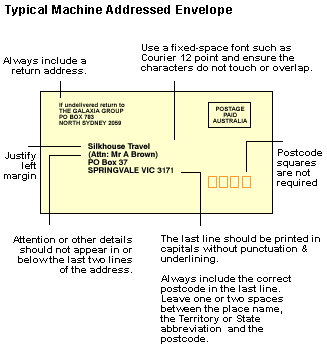
Hand Addressing Tips
Use envelopes pre-printed with the four Postcode Squares.
Print the four numerals of the destination postcode clearly within the Squares.
Do not use the Squares on hand addressed envelopes for overseas addresses - even if the overseas postal code can fit into the Squares.
Print the place name and state or territory abbreviation on the bottom line in capital letters.
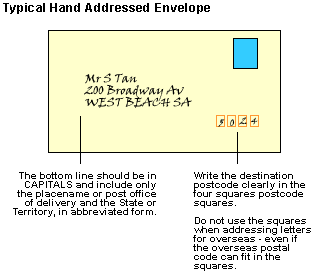
Addressing Formats
|
Address Format for a Routing Street Address |
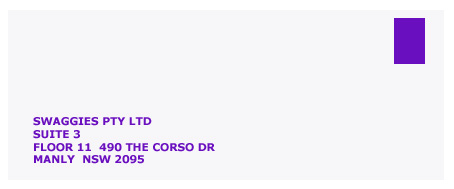 |
| Address Format for a GPO, Post Office Box or Locked Bag |
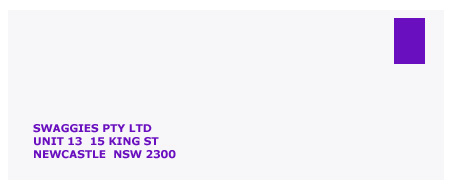 |
|
Address Format for an Address to a Flat or Unit |
 |
|
Address Format for a Multi Storey Building |
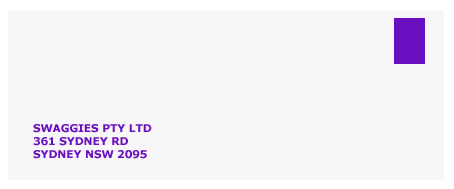 |